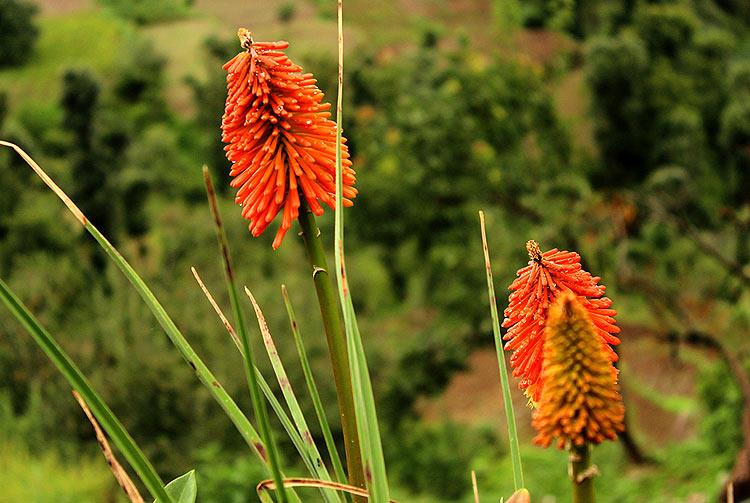
Perennial kniphofia flower commonly known as poker plant bloom on their own in the wild... and there's no one to pack them off to the lobbies of five-star properties
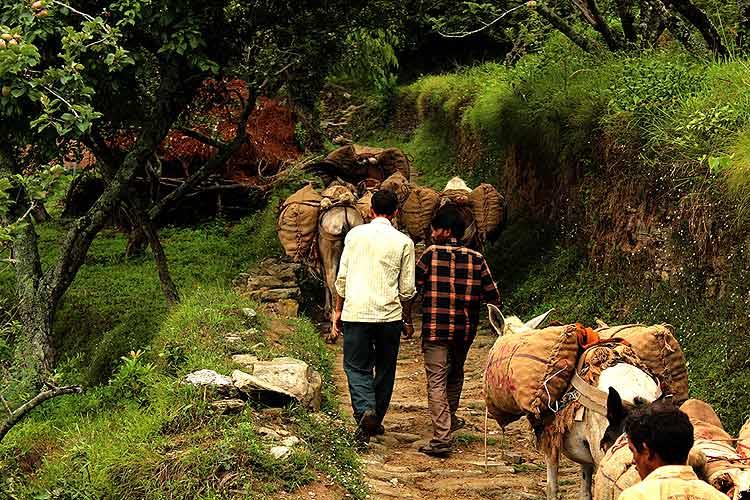
In the absence of a river to irrigate the land and with the mountainous terrain, it's hard work for these potato farmers to sow, grow and then take their harvest to the market. But each sack of these staple vegetables is vital for the economy, which is grappling with inflation.
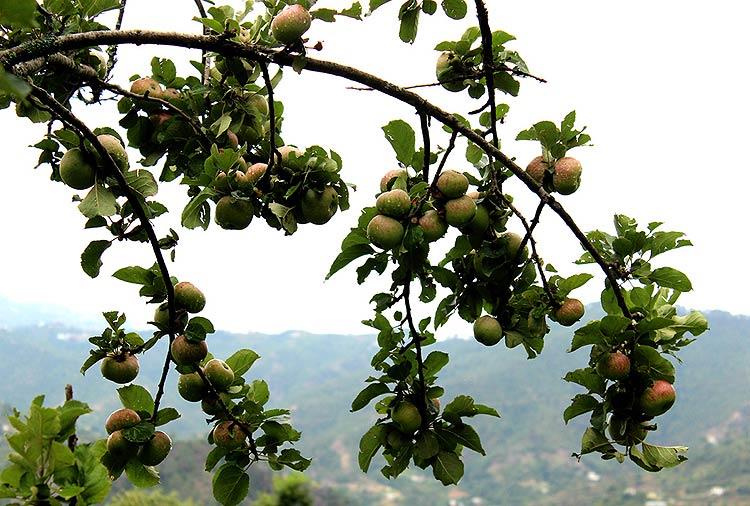
Though the Uttarakhand apples are not as famous as their Himachali counterparts, nonetheless they are as juicy and crunchy as it can be. These should be ripe-n-ready by mid-August.
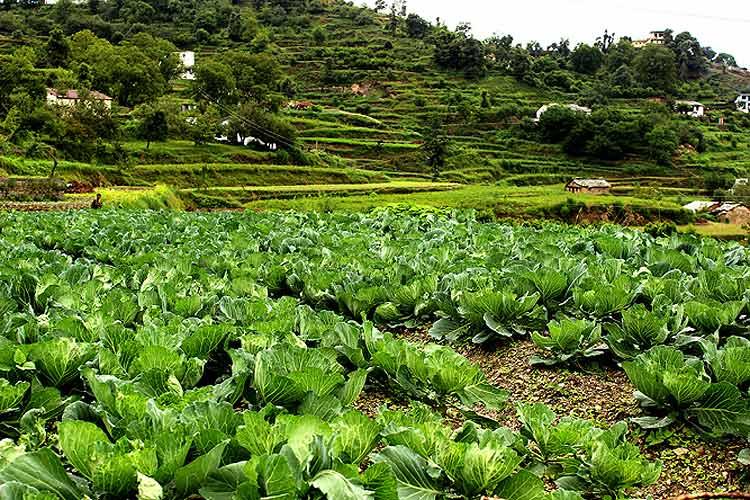
Along with potato, cabbage is one of the chief crops in the hills of Dhanachuli
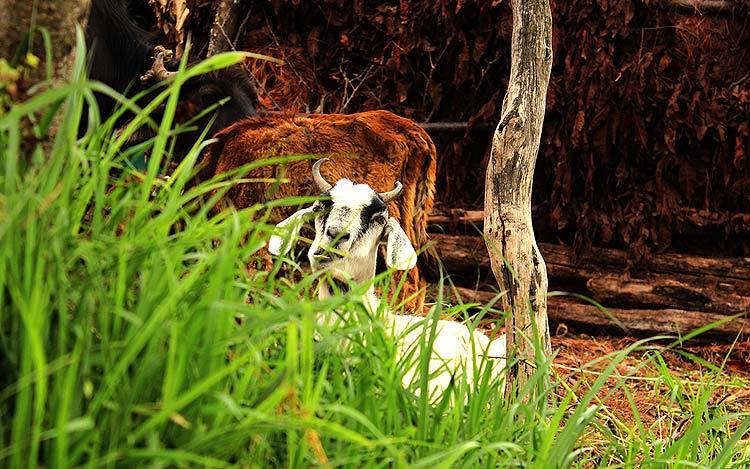
'Intruders?' Well, not us. But this 'important family member' is an old guard and doesn't spare us the 'what-brings-you-here' look in the absence of the farm's human occupants.
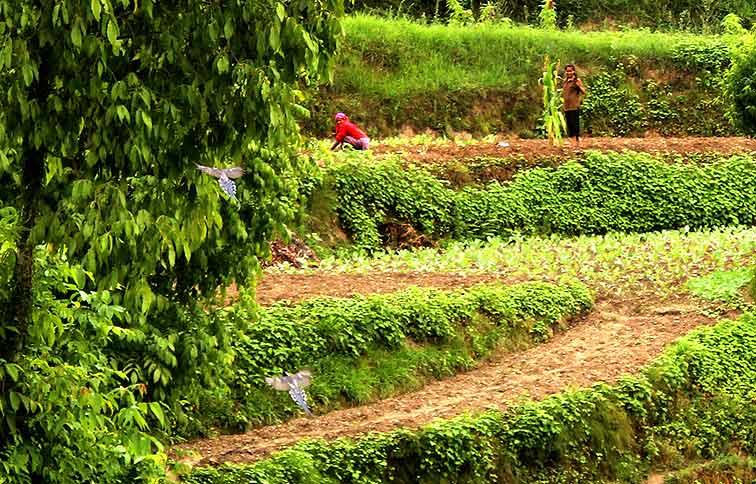
Villagers work on their farm patches of rajma and potatoes while this beautiful hill pheasant couple keeps them company
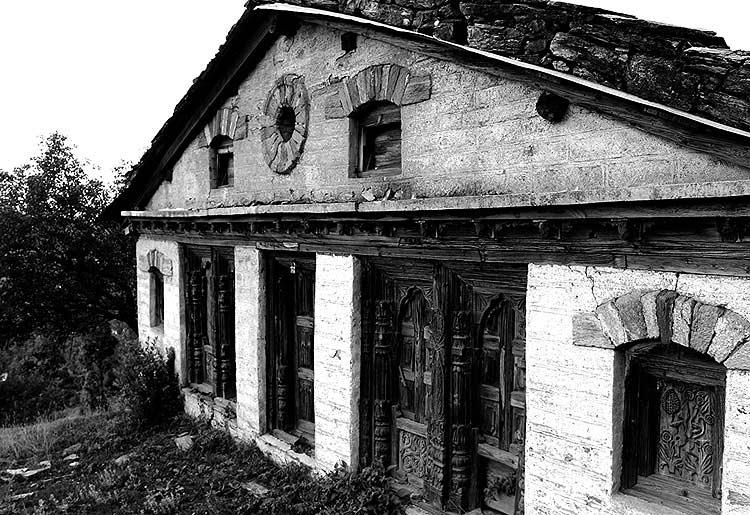
On the lookout for 'an interesting village' we were told about, we come across this structure first. This ruin of a house bore little resemblance to the architecture one associates with this region. But that was just the beginning.
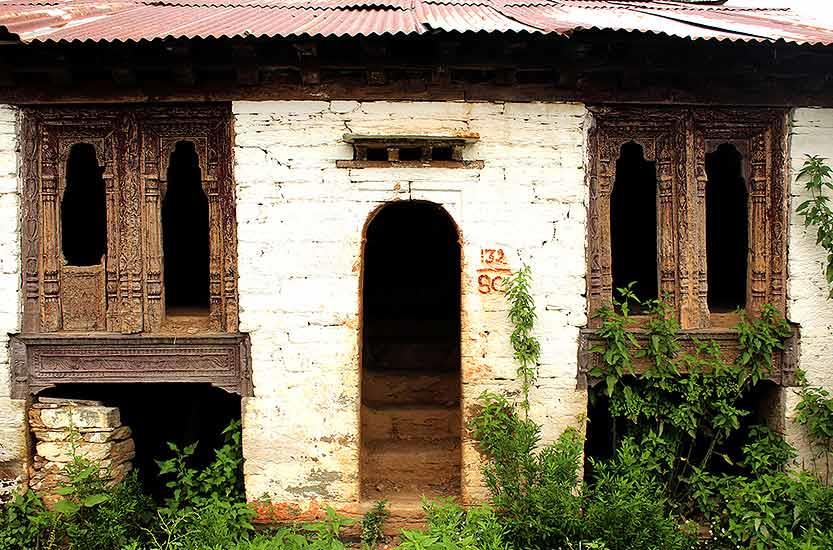
After about an hour's downhill trek, we reached the erstwhile Dhanachuli, a 200-year old hamlet first inhabited by people who migrated from the plains of Rajasthan, Uttar Pradesh and even Kashmir.
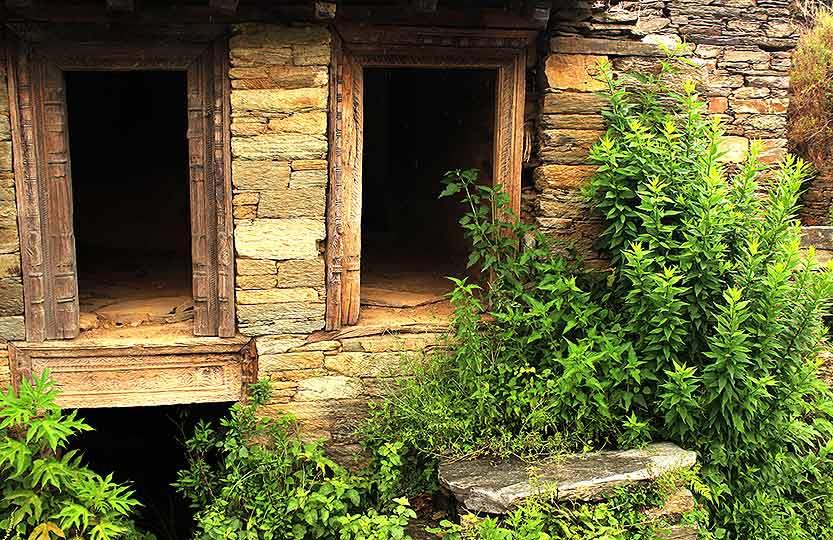
Age took its toll on the little houses, the later generations started moving up the hill in search of cultivable land, and these dwellings slowly became redundant.
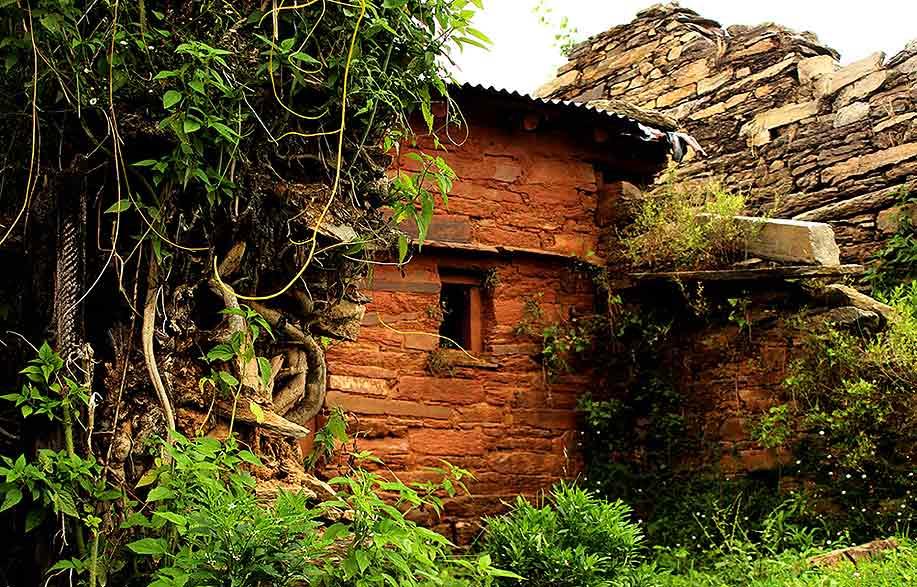
We are used to more elaborate ruins of forts and civilisations - but tucked away in a nondescript part of Uttarakhand, this also is a living example of a bygone era
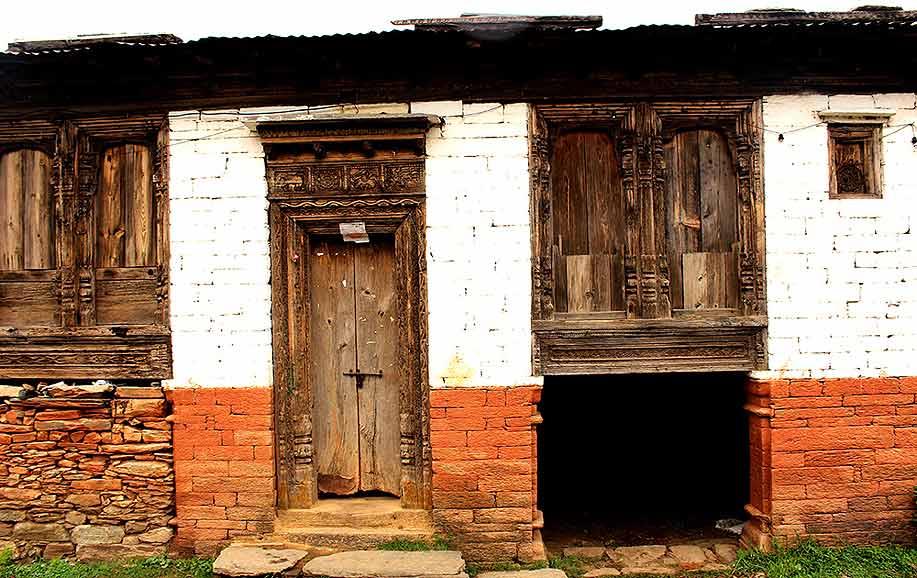
Almost all the decaying structures are locked, as their rightful owners have moved on. But the cow sheds with the hay stacks still serve as shelters for the cattle that villagers take out for grazing.
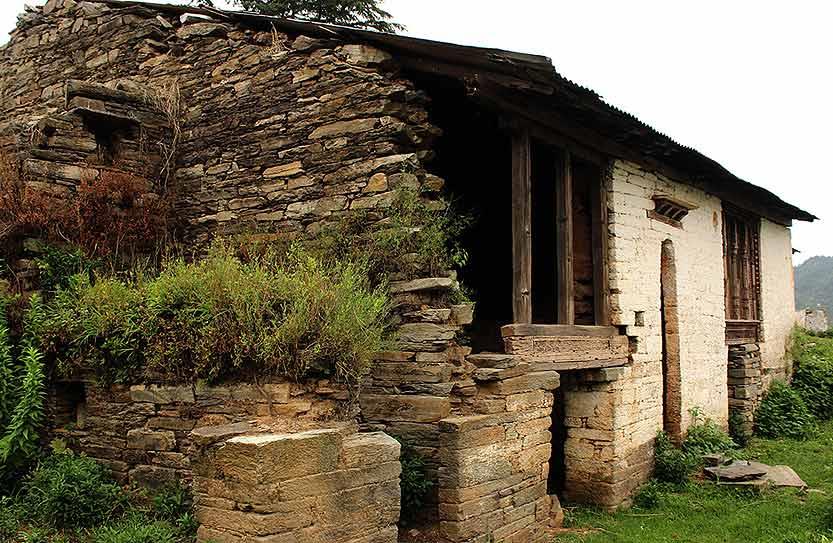
These age-old structures may be unfit to live in, but they still play a vital role for the handful of farmers here. In such a remote place, there's hardly any structure to house the potatoes or vegetables before they are taken to the market. So, the villagers often use these ruins as temporary warehouses.
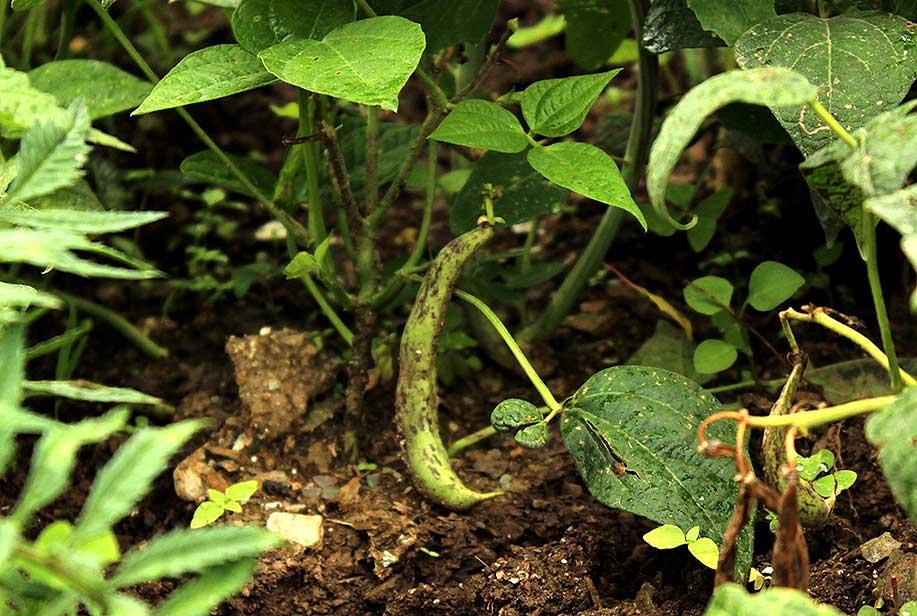
We spotted the only inhabited hut near the village, and like almost every house in this part of the world, it had its own little veggie patch growing beans

This window is laid open to sunshine and rain - as it has been for centuries. Only, no one looks out of it now.
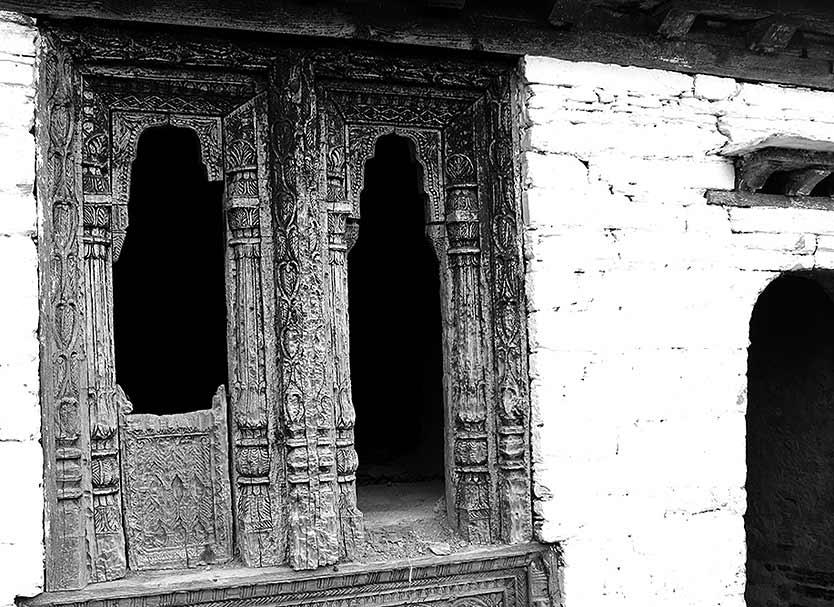
Even after almost 200 years, the striking architecture enthrals you. The Rajasthani and Mughal touches are still evident in the worn-out wood carvings.
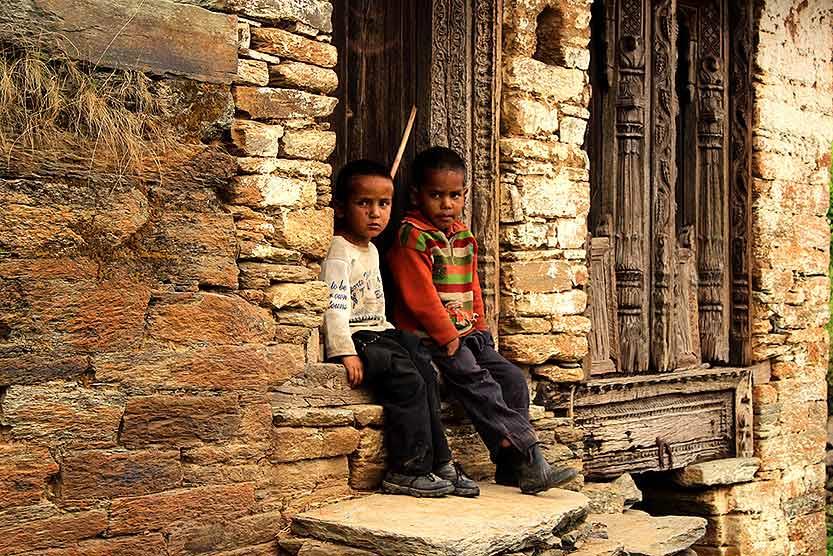
It must have once been a throbbing hamlet with many inhabitants. Now, it's just the perfect place for a game of hide-and-seek for these kids.
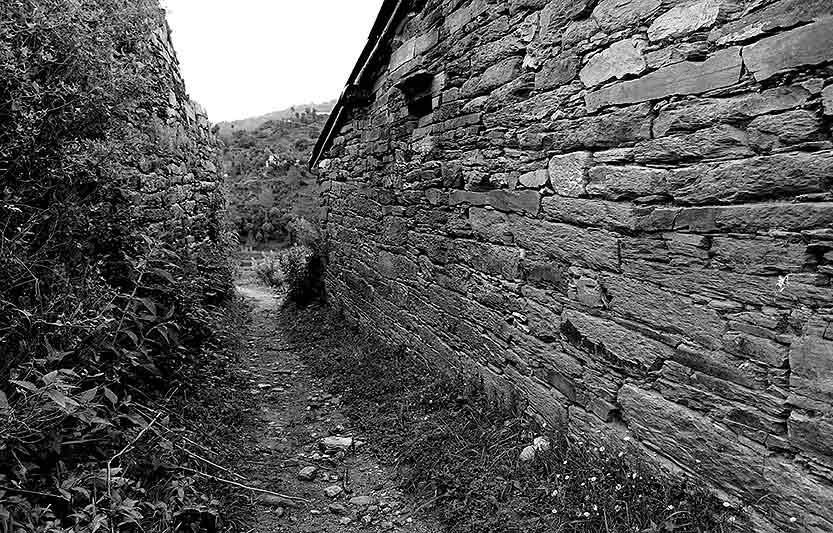
This abandoned village may not be the famed 'Benaras ki galiyan', but for the people of Dhanachuli, it still remains the place from 'where it all began'.
Dhanachuli
hamlets
Uttarakhand


